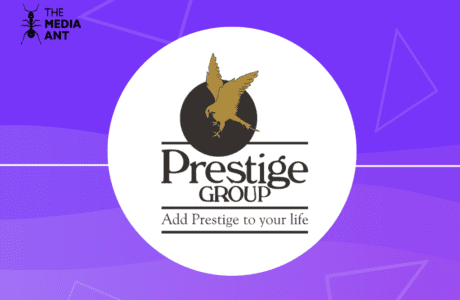Lakmé, India’s pioneering beauty brand, has been a cornerstone of the Indian cosmetics industry for decades. Established at the request of Prime Minister Jawaharlal Nehru to reduce dependence on foreign beauty products, Lakmé has since evolved into an iconic name synonymous with beauty, glamour, and innovation. This blog delves into the brand’s marketing journey, year-wise campaigns, strategies, and its mastery of the 4Ps and SWOT analysis, showcasing how Lakmé became a market leader.
The Beginnings of Lakmé
1952: Birth of Lakmé
Lakmé was born out of patriotism and practicality. Nehru’s concern about Indian women spending valuable foreign exchange on imported beauty products led to a conversation with JRD Tata, resulting in the creation of Lakmé. The name “Lakmé,” inspired by the French rendition of Lakshmi, the goddess of wealth, symbolized grace and beauty with a distinctly Indian essence.
Year-Wise Marketing Campaigns and Milestones
1961: Simone Tata’s Leadership and Brand Transformation
When Simone Tata took the reins, Lakmé underwent a significant transformation. She identified the diverse needs of Indian women and redefined the brand’s approach, making it an essential part of every household. Simone’s vision brought credibility and relatability, helping Lakmé secure its position as a trusted name.
1980s: Bold Advertising Campaigns
Lakmé broke stereotypes with campaigns like “If color be to beauty what music is to mood, play on,” starring Shyamoli Verma. These campaigns merged tradition with modernity, allowing Indian women to embrace bold colors and redefine beauty norms.
1990s: Bollywood Partnerships
By collaborating with Bollywood icons like Rekha, Aishwarya Rai, and Kareena Kapoor, Lakmé captured the imagination of millions. These endorsements amplified Lakmé’s association with glamour and solidified its reputation as a market leader.
1996: Tata-HUL Merger
The sale of Lakmé to Hindustan Unilever Limited (HUL) marked a pivotal moment. With HUL’s FMCG expertise, Lakmé expanded its product portfolio and market reach, strengthening its position in the competitive beauty landscape.
2000s: Lakmé Fashion Week
Lakmé Fashion Week (LFW) was launched to bridge the gap between beauty and fashion. This annual event featured top designers, models, and influencers, turning Lakmé into a trendsetter synonymous with high fashion.
2010s: Embracing Digital Transformation
Lakmé’s marketing evolved with the digital revolution. By leveraging social media platforms and influencer marketing, the brand connected with millennials and Gen Z. Tutorials, campaigns, and wellness-focused products positioned Lakmé as more than makeup—it became a lifestyle brand.
2020s: Technology-Driven Innovation
Lakmé embraced beauty tech with AI-driven tools like the Foundation Finder and Make-up Pro app. These innovations personalized customer experiences, reinforcing Lakmé’s relevance in an ever-changing industry.
SWOT Analysis of Lakmé
Strengths
- Strong Brand Legacy: Decades of trust and recognition as India’s first beauty brand.
- Diverse Product Portfolio: Comprehensive range catering to varied customer needs.
- Bollywood Partnerships: Endorsements by top stars enhance credibility.
- Technological Integration: AI tools for personalized shopping experiences.
Weaknesses
- Price Sensitivity: Premium pricing may limit accessibility for some consumers.
- Competitive Pressure: Facing challenges from global and domestic brands.
Opportunities
- Sustainability Trends: Growing demand for eco-friendly and natural products.
- Expansion in Rural Markets: Untapped potential in tier-2 and tier-3 cities.
- Digital Marketing: Increased engagement through social media and e-commerce platforms.
Threats
- Rising Competition: From both international giants and emerging local brands.
- Economic Uncertainty: Fluctuating disposable income can impact sales.
The 4Ps of Lakmé’s Marketing Strategy
Product
Lakmé offers a wide range of products, including skincare, makeup, and haircare. Its portfolio caters to diverse demographics and occasions, blending tradition with modernity.
Price
Lakmé balances affordability and premium appeal, offering products in various price ranges. Its strategy caters to both budget-conscious buyers and luxury seekers.
Place
Lakmé products are available across offline and online channels, ensuring accessibility. From local stores to e-commerce platforms, Lakmé’s omnichannel presence strengthens its market penetration.
Promotion
Lakmé’s promotional strategy includes:
- Celebrity Endorsements: Leveraging Bollywood icons.
- Fashion Events: Hosting Lakmé Fashion Week.
- Digital Campaigns: Engaging millennials via social media and influencers.
- Retail Experiences: Creating immersive experiences at Lakmé salons and counters.
Key Takeaways from Lakmé’s Marketing Strategy
- Adaptability: Lakmé’s ability to evolve with changing trends has been crucial to its success.
- Cultural Relevance: By blending Indian traditions with global trends, Lakmé resonates deeply with its audience.
- Technology Integration: Leveraging AI and digital tools ensures relevance in a tech-savvy market.
- Event Marketing: Initiatives like Lakmé Fashion Week position the brand as a trendsetter.
- Emotional Connection: Campaigns that celebrate individuality and empowerment build lasting consumer relationships.
Conclusion
Lakmé’s journey from a patriotic initiative to a beauty powerhouse is a testament to strategic marketing, innovation, and cultural resonance. With its legacy of empowering Indian women and setting trends, Lakmé continues to redefine beauty standards while staying true to its roots. As it navigates the future with sustainability, technology, and inclusivity, Lakmé remains an iconic brand that celebrates the essence of Indian beauty.





